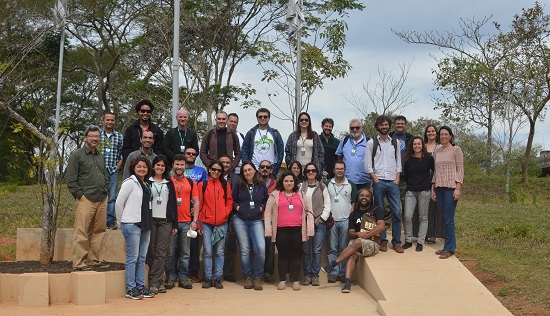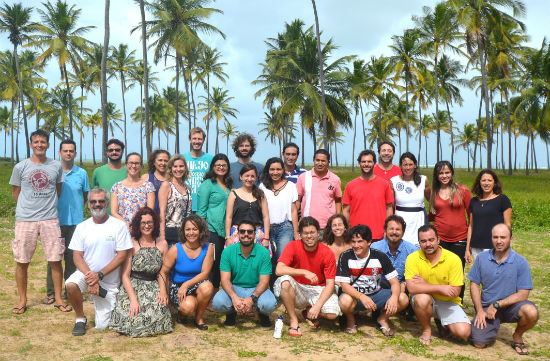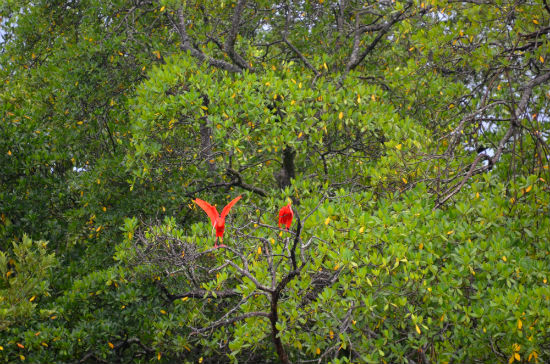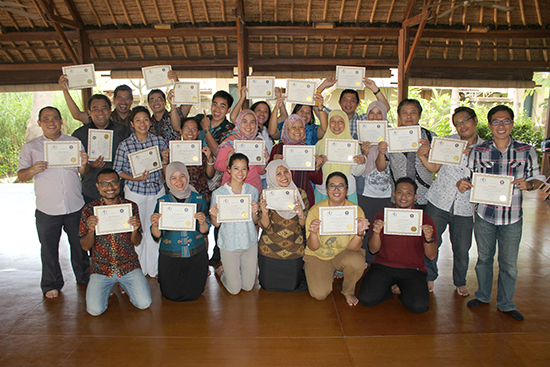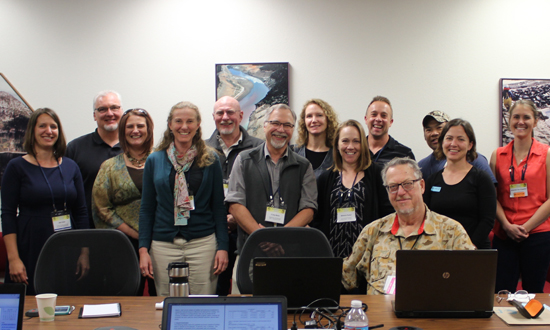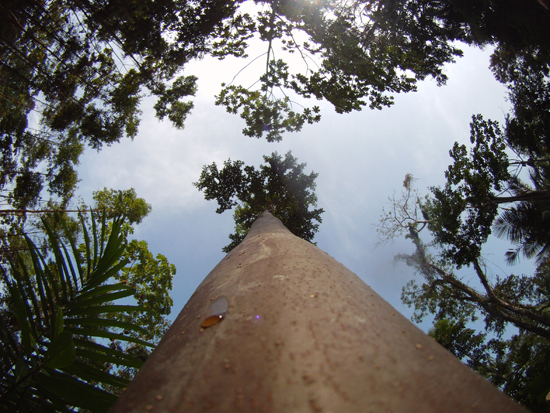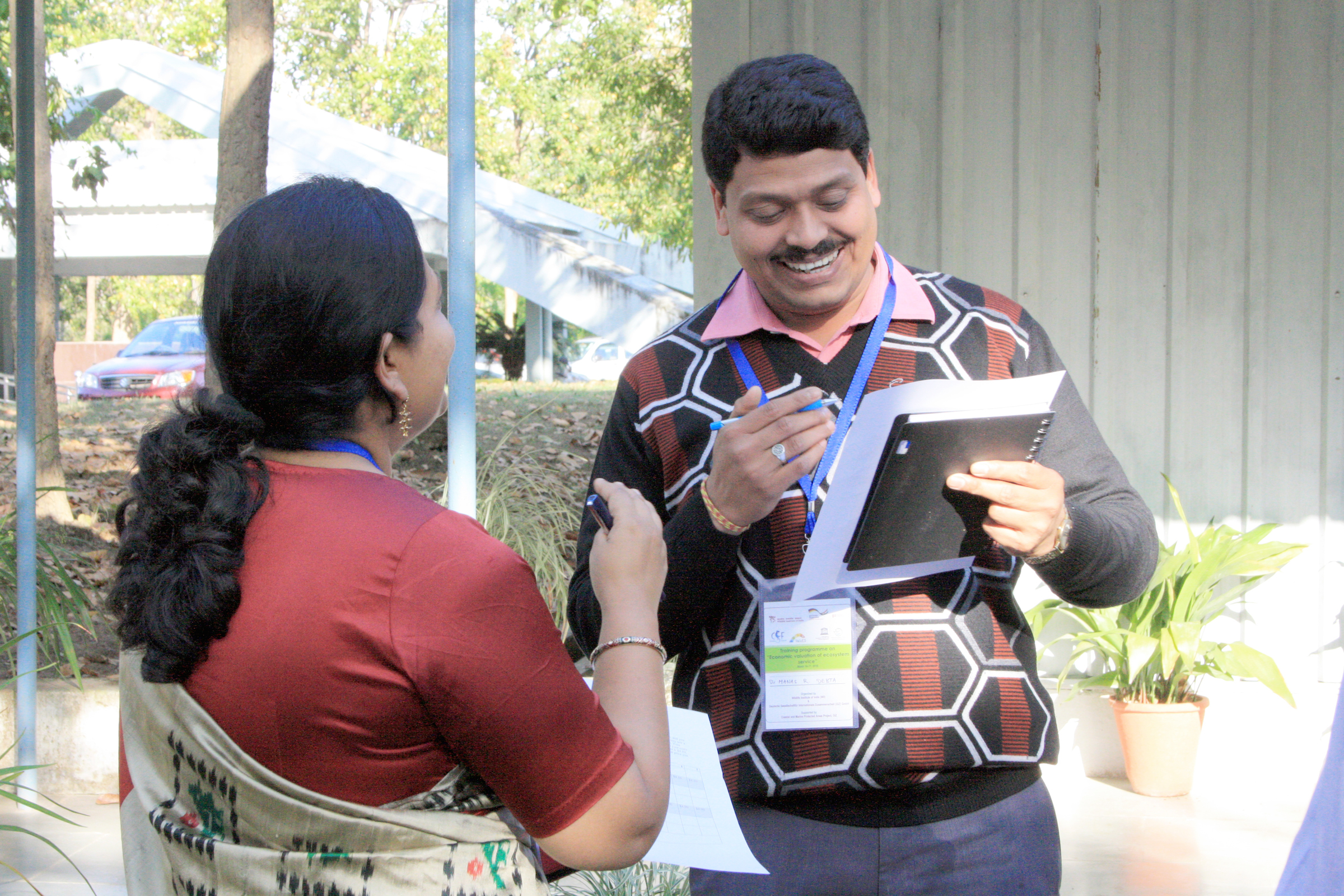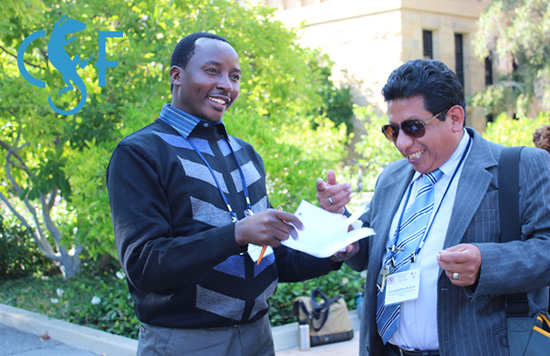News
In early August, CSF and the Chico Mendes Institute for Conservation of Biodiversity (ICMBio), in partnership with the United States Forest Service (USFS), held a four day training on Economic and Financial Feasibility of Supporting Services for Visitation of Conservation Units (Unidades de Conservação - UCs) at the Biodiversity National Academy (ACADEBio), in Iperó, Brazil.
Course participants and instructors.
Scarlet ibis (Eudocimus ruber) in a mangrove treeIn May 2016, staff from the CSF Brazil team travelled to the Salgado Paraense region, located on the northern coast of the state of Pará. Their goal was to collect important information as part of our project on the sustainability of mangrove ecosystems. This project seeks to sensitize the government and society to the benefits these ecosystems provide, and make recommendations about economic instruments that could be used to promote financial sustainability of protected areas.
A little over one month ago, CSF completed its second Indonesian Economic Tools for Marine Conservation course hosted in Bali. Twenty-four Indonesian conservation professionals from nineteen institutions participated in the two-week course. Some of the institutions represented were the Ministry of Marine Affairs and Fisheries, Dept. of Environment and Forestry, University of Indonesia, TNC, WWF, as well as other national universities and NGOs and private consultants.
Course participants and instructors.
In April, CSF lead a three-day training for the California Department of Fish and Wildlife (CDFW) in Sacramento, CA. Participants included 22 members of the CDFW staff, and 5 members of the California Fish and Game Commission (FGC). We were able to reach 8 staff in field offices across California using remote access technology and our online workspace.
Economic Valuation of Ecosystem Services
Wildlife Institute of India, Dehradun, India
March 14-17, 2016
CSF Training Director Kim Bonine with course participants.
Foto: Ana Gómez
CSF is now taking applications for our 18th annual International Economic Tools for Conservation course to be held July 25th - August 5th, 2016. The course will be located at the University of California Berkeley as part of our new partnership with the College of Natural Resources' International and Executive programs (IEP).

